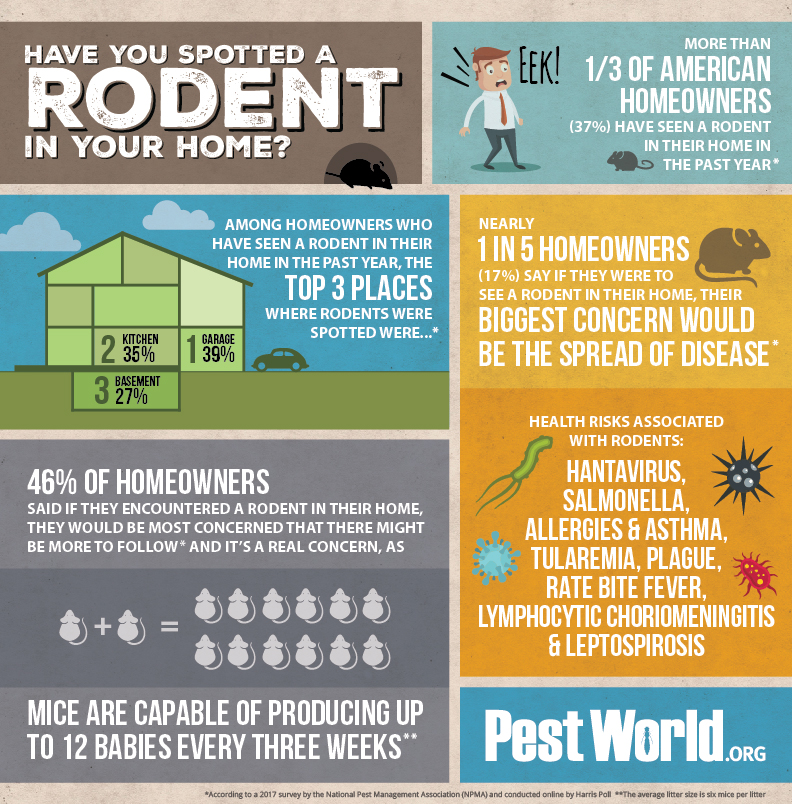Tips For Homeowners To Maintain Rodents Out Of Their Attics
Tips For Homeowners To Maintain Rodents Out Of Their Attics
Blog Article
Write-Up Writer-Thybo Garza
Picture your attic room as a comfy Airbnb for rats, with insulation as fluffy as resort pillows and electrical wiring much more enticing than room solution. Now, visualize these undesirable visitors tossing a wild celebration in your house while you're away. As a house owner, ensuring your attic room is rodent-proof is not just about peace of mind; it has to do with securing your property and liked ones. So, what easy steps can you take to guard your refuge from these fuzzy trespassers?
Check for Entrance Points
To begin rodent-proofing your attic, evaluate for access factors. Begin by meticulously checking out the outside of your home, seeking any openings that rats can use to access to your attic. Check for gaps around utility lines, vents, and pipes, in addition to any fractures or holes in the foundation or siding. Make certain to pay very close attention to areas where different structure materials meet, as these are common entry points for rats.
Additionally, examine the roofing system for any type of harmed or missing out on tiles, as well as any gaps around the edges where rats might squeeze with. Inside the attic, seek indicators of existing rodent task such as droppings, ate cords, or nesting products. Utilize a flashlight to thoroughly examine dark edges and surprise rooms.
Seal Cracks and Gaps
Check your attic room extensively for any splits and voids that require to be sealed to stop rats from going into. Rodents can squeeze with also the smallest openings, so it's vital to secure any type of prospective entry points. Examine around pipes, vents, wires, and where the wall surfaces meet the roof. Utilize a combination of steel wool and caulking to seal off these openings successfully. Steel wool is an outstanding deterrent as rodents can't chew through it. Guarantee that all spaces are snugly sealed to reject access to unwanted bugs.
Don't ignore the importance of sealing voids around windows and doors too. Usage weather removing or door moves to secure these locations efficiently. Examine see here now where energy lines get in the attic room and seal them off utilizing an ideal sealer. By putting in the time to secure all fractures and gaps in your attic room, you produce a barrier that rodents will locate hard to violation. Prevention is key in rodent-proofing your attic, so be complete in your efforts to seal any type of possible entrance points.
Get Rid Of Food Resources
Take positive actions to get rid of or save all prospective food sources in your attic to discourage rodents from infesting the room. Rodents are brought in to food, so eliminating their food sources is crucial in keeping them out of your attic room.
Below's what you can do:
1. ** Store food firmly **: Avoid leaving any type of food items in the attic room. Shop all food in airtight containers constructed from metal or durable plastic to avoid rats from accessing them.
2. ** Clean up debris **: Get rid of any type of stacks of particles, such as old papers, cardboard boxes, or wood scraps, that rodents could make use of as nesting material or food resources. Maintain the attic clutter-free to make it much less enticing to rats.
3. ** Dispose of garbage appropriately **: If you use your attic room for storage and have trash or waste up there, make sure to get rid of it frequently and correctly. Rotting garbage can draw in rodents, so maintain the attic tidy and devoid of any kind of organic waste.
Conclusion
To conclude, remember that an ounce of avoidance deserves a pound of cure when it comes to rodent-proofing your attic.
By taking the time to examine for entrance factors, seal cracks and voids, and eliminate food resources, you can maintain undesirable insects away.
Remember, 'An ounce of avoidance deserves a pound of cure' - Benjamin Franklin.
Keep proactive and shield your home from rodent invasions.
